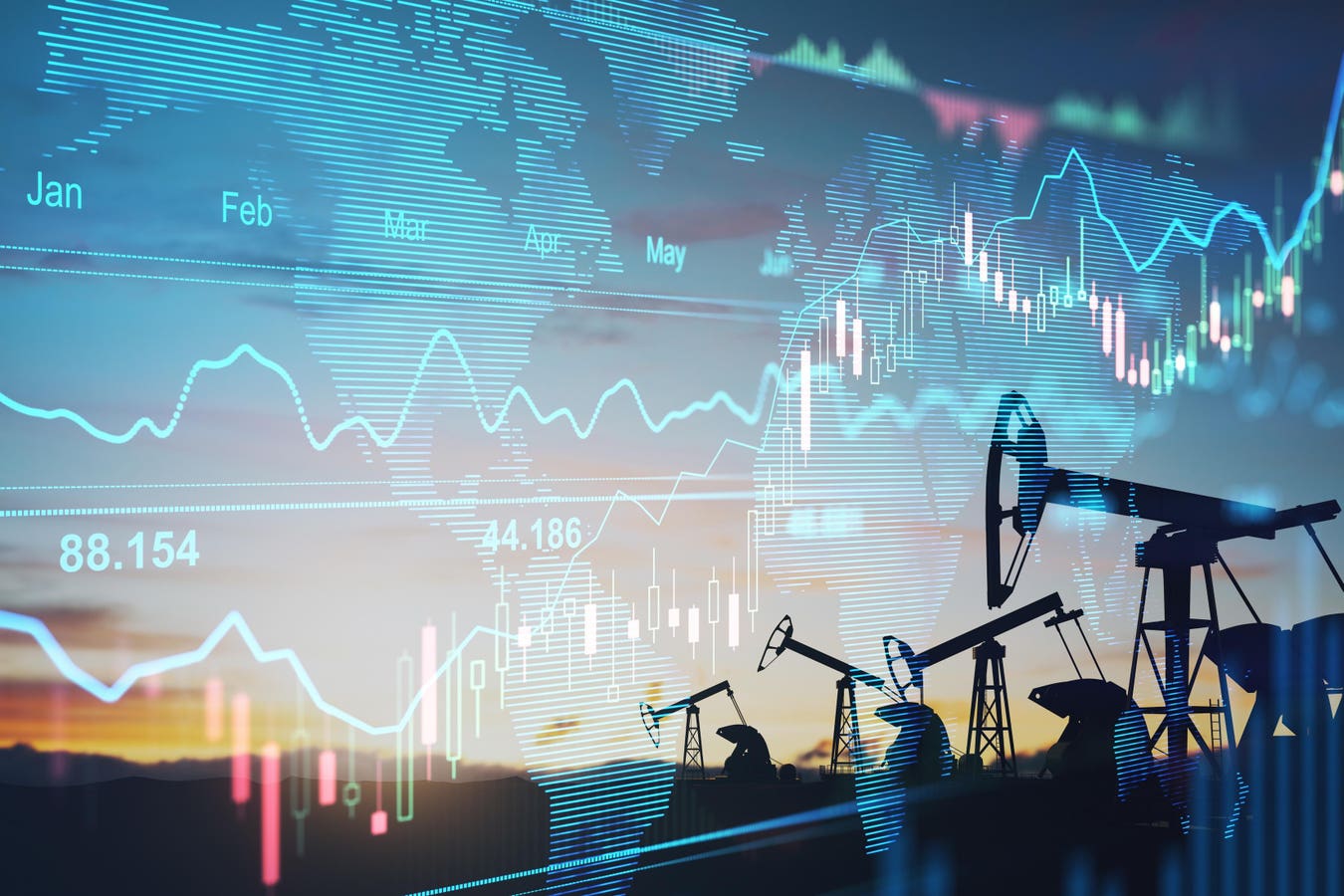Oil is going up and as I wrote recently $300 is the likely destination in two to three, perhaps at the latest five years’ time. You don’t have to factor in war in the Middle East for that or consider the rundown of the U.S. strategy reserve either. Simply adjusting for inflation will get it above $200 a barrel and any commodity-style spike will do the rest.
It’s all about inflation, and there has been a lot and there will be more.
Here is a chart of WTI crude over the longish term from the Federal Reserve; here is the critical portion:
You can see for yourself and do the math to estimate that unless oil is doomed, when you factor in elevated inflation then $200-$300 a barrel is in our not-too-distant future. Here is a chart taking prices from 2007 and 2008 and taking the very long-term average of energy price inflation and projecting that forwards:
Like all projections, they are not fate but predicated on many factors. The big one, however, is inflation.
In the U.K. they call inflation “the cost of living crisis,” which in typical manner is a misdirection of what is going on. The crisis is not created by rising prices, it is driven by a fall in wealth.
The world went on hiatus during the pandemic, and we all got poorer. Money supply grew alongside of that drop in wealth, so the price of things has been adjusting accordingly. Even if money supply hadn’t increased and simply stayed the same, prices would have adjusted upwards to balance wealth lost without money supply shrinking.
We are climbing back out of this economic chasm, but it’s not plain sailing because economic pressure leads to political upset which leads to further economic pressure. The bumpier the ride out of difficulties, the longer the recovery takes and the harder the journey and likely the longer the run of inflation.
So let’s go back many decades to young me. I noticed at a tender age, and boom and bust was a short cycle back then; that in good times the TV news was all about the environment (even in those days) and bust times were all about the misery of unemployment. Even as a child I could link the pivot between boom and bust, luxury and necessity. In a bust, fear of melting ice caps disappeared from the headlines replaced by the troubles of unemployed and inconsolable redundant workers.
So fast forwards 50 years, here we are in a similar situation. Inflation now as then is in play to try and keep government finances on the rails. (Remember, no matter what is said, only governments can create inflation, they control the printing press and only the increasing supply of government money can create inflation.)
The fragility of government finances is palpable and if inflation doesn’t keep gnawing away at debt then big trouble is in store. The number for long-term future inflation is therefore probably 5%, a number I proposed here when the pandemic kicked off while predicting high inflation while so many economic professors were predicting deflation. From a government perspective, 5% inflation can do the trick to get things back in sync over the long haul, but it has to be said that the political layer is not doing its bit to keep deficits enough in check to bring the need for inflation to a quick end.
But here comes the good news. Sorry to be a cynic but the bottom line is, government sector pensions are not supportable unless our economies get back to growth and an elevated level of growth at that. That is not the good news, it’s the driver for the good news, the upshot being government will soon be focusing on ways to get the economy growing and fast. If a dash for growth is not successful, then one of the big ways governments will wriggle out of its over-leveraged promises will be to renege on its own pension liabilities, which are colossal, and that realization will drive a lot of positive change.
This will also mean elevated inflation, so let’s keep the 5% inflation number as a level, not the old 2%-3% of yore, because growth is easier with “loose money” and “loose money” will have to come and come soon, inflation or no.
This imminent rush for growth intersects with oil being rebased by inflation over time and a pivot back to cheap sources of energy like oil. Then if you have doubts about higher oil prices you can throw long-term conflicts in oil producing regions and you can tag all the doomster stuff on for good measure.
For those appalled by the prospects of oil usage, remember that high prices for fossil fuels will help drive market demand for sustainable energy. Technology is fated to bring that cost forever downwards and like all technological trends very significantly over time. When anything is worth less than its value to combust it really is under utilized and it is destiny that sustainable energy will be cheaper than digging combustible liquids and solids from the ground. That progress won’t come from impoverished economies but vibrant ones and while technology grinds away at bringing down the cost of renewable energy, soon enough we will be back to boom times and the environment will once again be front and center.
Read the full article here










